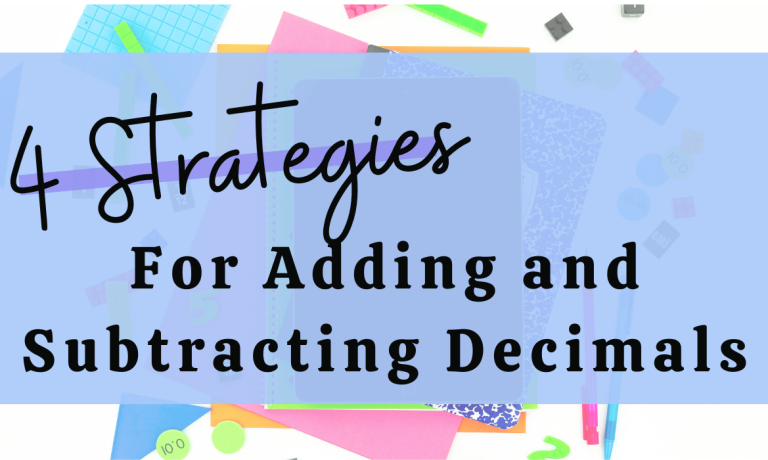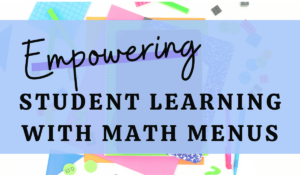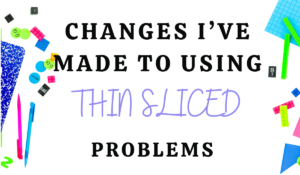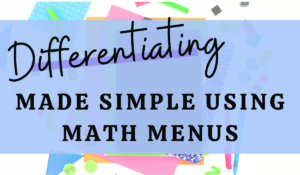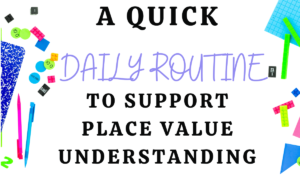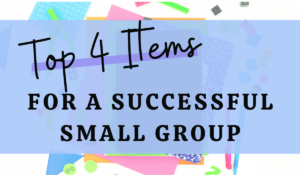There are so many great strategies when it comes to adding and subtracting decimals. Too often, the standard algorithm is the only method taught because that is how we were taught to do it. Is the standard algorithm bad? Absolutely not. It is a very efficient strategy, and picking an efficient strategy is one of the elements of being fluent with numbers. However, just teaching the standard algorithm doesn’t let students understand what is actually happening. Keep reading to read about 4 strategies for adding and subtracting decimals.
Base 10 Blocks
Base 10 blocks are NOT just for lower elementary! I introduce decimal place value with base 10 blocks. It allows students to visually see the size difference between each place value.
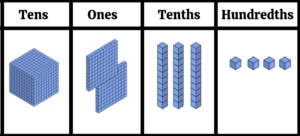
We look at the base 10 blocks and determine how many hundredths make one tenth, how many tenths make one, and how many ones make ten. We talk about how thousandths are so small that it would be if we took a hundredth block and cut it into 10 pieces. Being able to discuss the relationship between each place value sets a foundation for students to be able to understand the size of each. This number represented above would we 12.34. I continue to use base 10 blocks when we are adding and subtracting. It allows students to visually regroup. For example, if they are adding and end up with 11 tenths (11 rods), they would switch that out for 1 one and 1 tenth. Being able to visually see this is a great way for them to understand what is actually happening when you are regrouping.
Place Value Disks
Another tool I use is place value disks. Similarly to base 10 blocks, place value disks are very visual and allows students to see what is actually happening when regrouping, both with addition and subtraction. I only use place value disks with operations with decimals, not when introducing place value. The reason why is because even though decimal disks are a great tool, they are all the same size. This can be confusing to students, because 0.1 is very different from 0.01, but when they look at the decimal disk, they are the same size. By the time we are adding and subtracting decimals, students have had plenty of time using base 10 blocks to explore the size of each place value, so this is not a point of confusion for them.
Decomposing the Problem by Place Value
When students are able to decompose numbers to make operations easier, it shows a true understanding of the place value. This is a strategy that builds on strategies that they have learned with whole numbers. If students are adding 2.4 + 3.7, students should be able to decompose these numbers to add the ones and then add the tenths. Student work would look like this:
2 + 3 = 5,
0.4 + 0.7 = 1.1
5 + 1.1 = 6.1
Standard Algorithm
By the time students are exposed to the standard algorithm, the hope is that they can determine the rule of lining up the place values on their own. Again, there is nothing wrong with the standard algorithm. It is an efficient strategy. The problem is how it is usually taught. Teachers are stressed on time and tell students “line up the decimals” and then move on. When taught like that, problems like 4 + 2.3 are usually given answers of 2.7 because students do not have the understanding that 4 is the same as 4.0. When students are exposed to other strategies and are able to make the connections and understand the ideas behind the standard algorithm, it becomes an efficient strategy.
These 4 strategies for adding and subtracting decimals all have a special place in my classroom. The connections and understandings that students make as they work through each strategy supports their place value understanding, a key concept in 5th grade. Remember, manipulatives are not just for younger students. I have manipulatives available all of the time when students are working on their math menus. Those connections between manipulatives and algorithms are so important!

